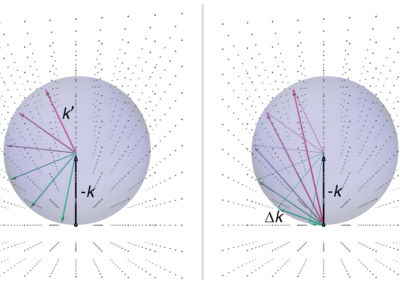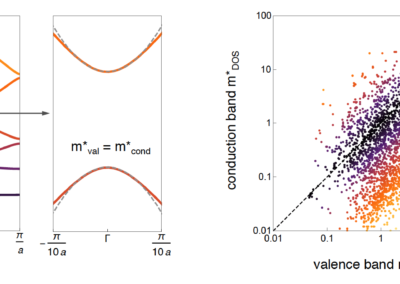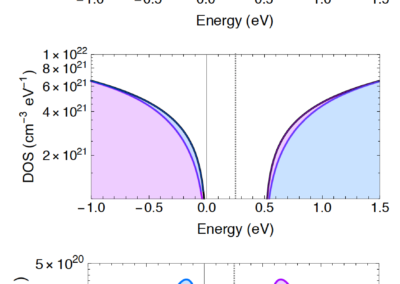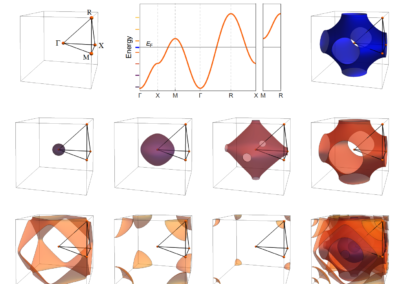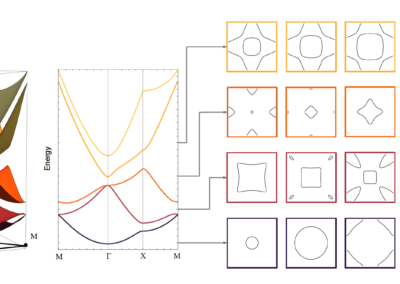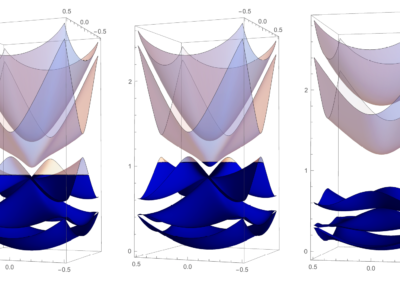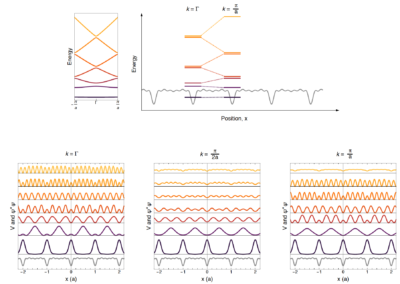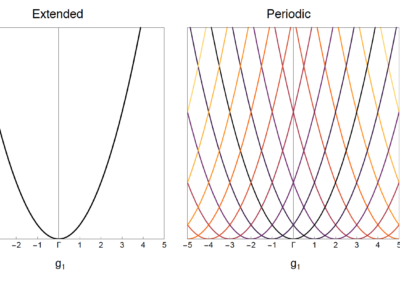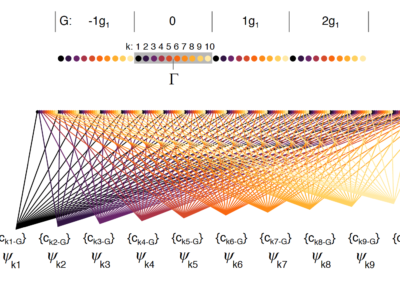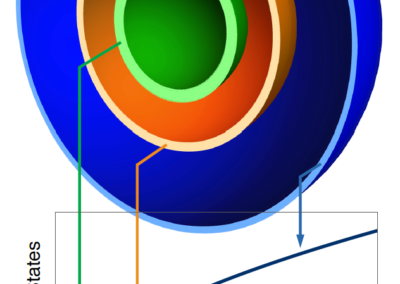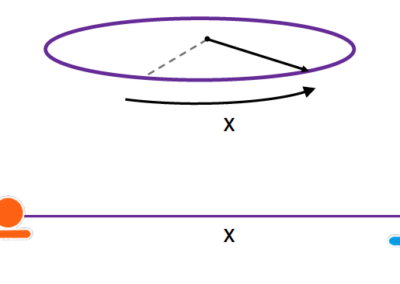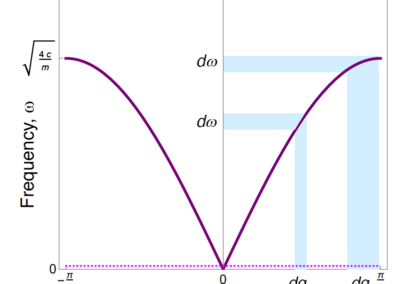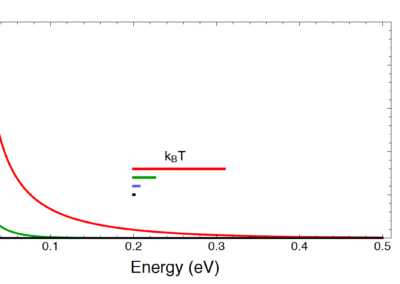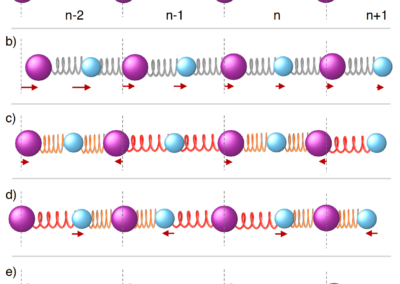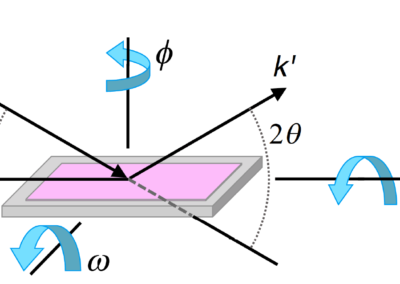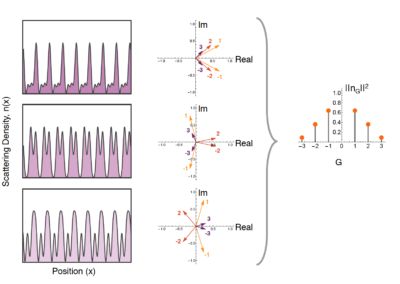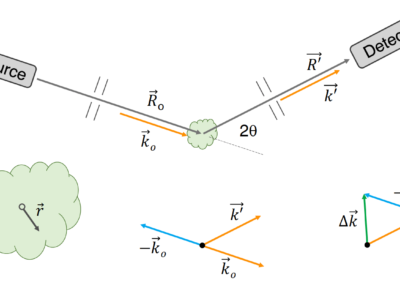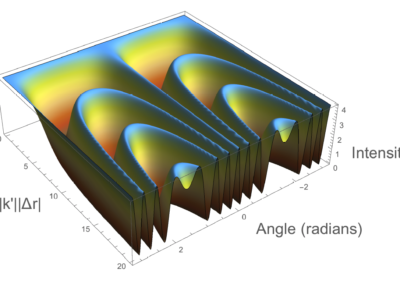Solid State Physics
Course Content
My core goal for students in Solid State Physics is to build an appreciation of how structural periodicity and quasiparticles can simplify seemingly intractable many-body problems . This often requires students to utilize reciprocal space as the natural domain for predicting and understanding a material’s properties. We explore periodicity in the context of diffraction, lattice vibrations, and electrons.
The core topics include:
- Elastic diffraction We introduce reciprocal space as the natural space to understand periodic solids
- Lattice vibrations; From there, we consider the normal modes of a solid and bring in just a hint of quantum mechanics to explain the heat capacity of solids.
- Electronic states in a periodic potential We establish Bloch’s theorem and solve Schrödinger’s equation in a periodic potential.
- Heat and charge transport Both a real-space Landauer and momentum-space Boltzmann formalism are used to predict transport properties.
- Special topic deep dives At the end of the semester, students have the freedom to select advanced topics that build off the above ideas; these include inelastic diffraction, phonons via the dynamical matrix, tight binding, scattering, and thermoelectric phenomena.
Download
Why read my blovations when you could just download the whole thing for free?
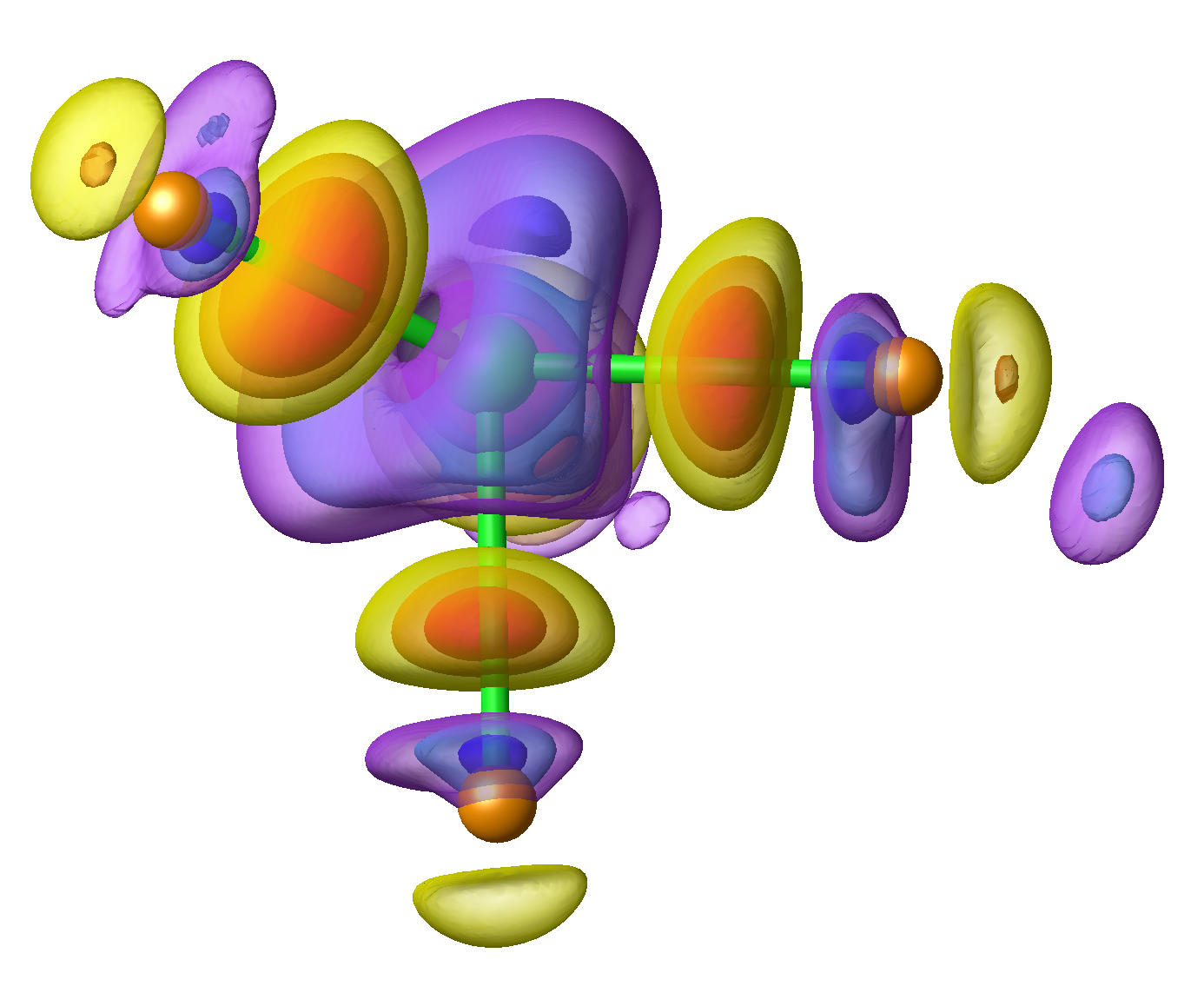
Approach
Physics Education Research shows that noisy classrooms with significant active learning can provide better student outcomes if well constructed. My journey down the Solid State Physics pathway thus began with this challenge. From there, my focus has crystallized to four questions that continue to haunt me. None of these problems are solved, here is simply my current understanding.
1) In the face of a cross-disciplinary array of students, how do you balance rigor with accessibility?
To date, my Solid State class has involved chemists, physicists, materials scientists, and chemical engineers; rarely is one of these populations even a majority in the classroom. In light of this diverse student population, the approach to date has been to maintain scientific depth while providing significantly more scaffolding for students. Such scaffolding includes providing:
- Pre-semester background content on mathematical and physics concepts.
- Separate mathematical and qualitative discussions
- Annotated derivations in full, gory detail
- Material case examples to explore how the physics manifests in real life.
2) How does the idea of a textbook evolve for a flipped classroom?
Traditional textbooks are written as a reference for students after the lecture has already occurred. In a flipped classroom, the textbook leads and the discussion/activities follow. As such, the textbook faces enormous pressure to both keep students engaged and provide a high level of clarity on these new ideas. This is not a small task. My hope is to write in a manner than is informal and conveys my love for the content. Likewise, my dream is to create appealing figures that highlight the physics and the connection to materials science.
3) Acknowledging solid state physics isn’t exactly easy, what do effective in-class activities look like?
Each lesson finishes with a series of pre-class questions that are tailored for in-class discussion in small groups. Most of these questions are qualitative in nature and require students to grapple with the concepts rather than the methodological details.
4) Can we take advantage of modern computational methods in the classroom?
Modern challenges in solid state physics are not analytically tractable. As such, the homework that accompanies this text is focused on numerical simulations rather than analytic derivations. However, having students develop numerical simulations remains a persistent challenge due to the broad range of scientific programming experience students have as they enter the course.
If you have ideas/opinions/examples you would like to share, I would love to discuss how to tailor upper division STEM for active learning.
